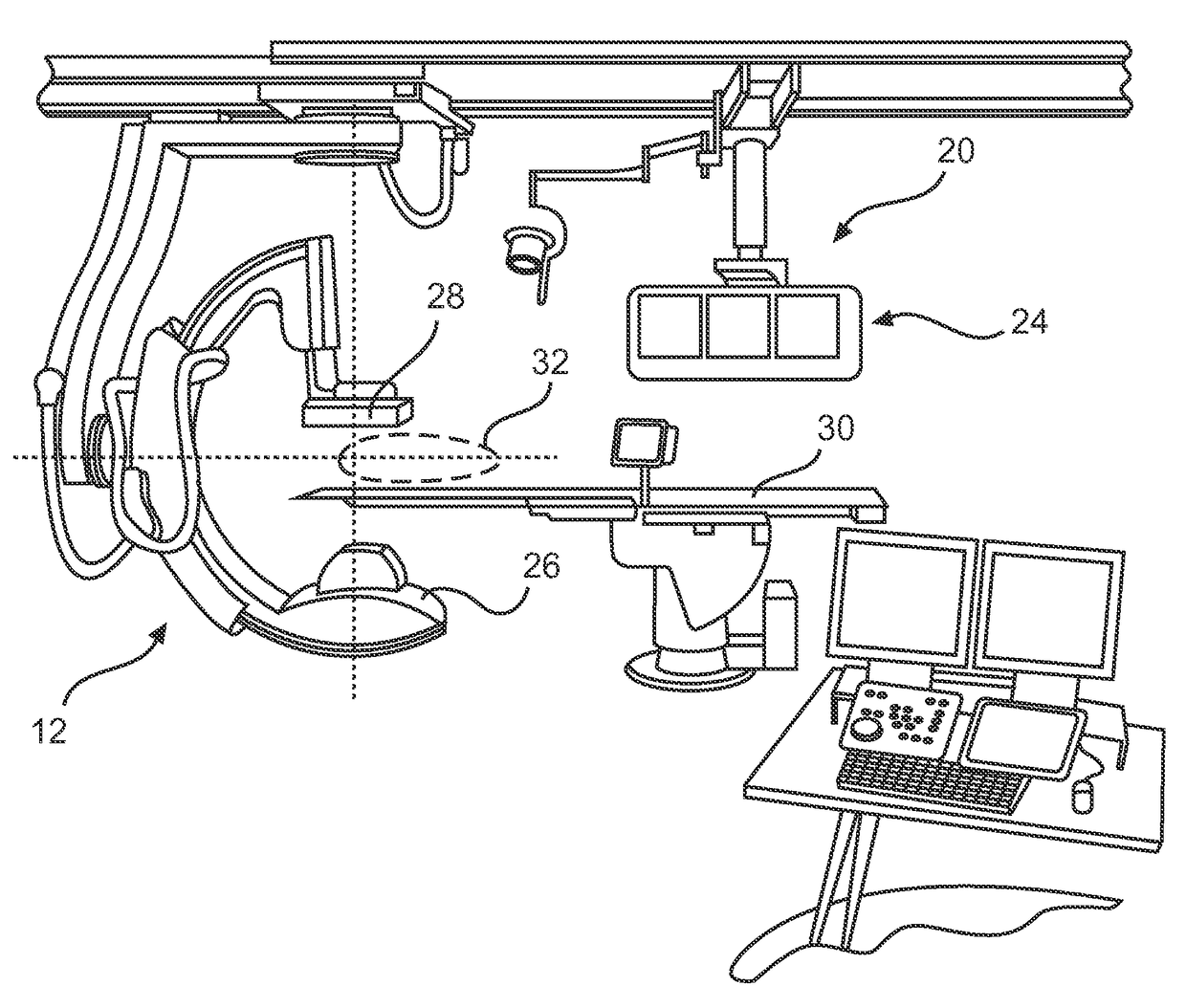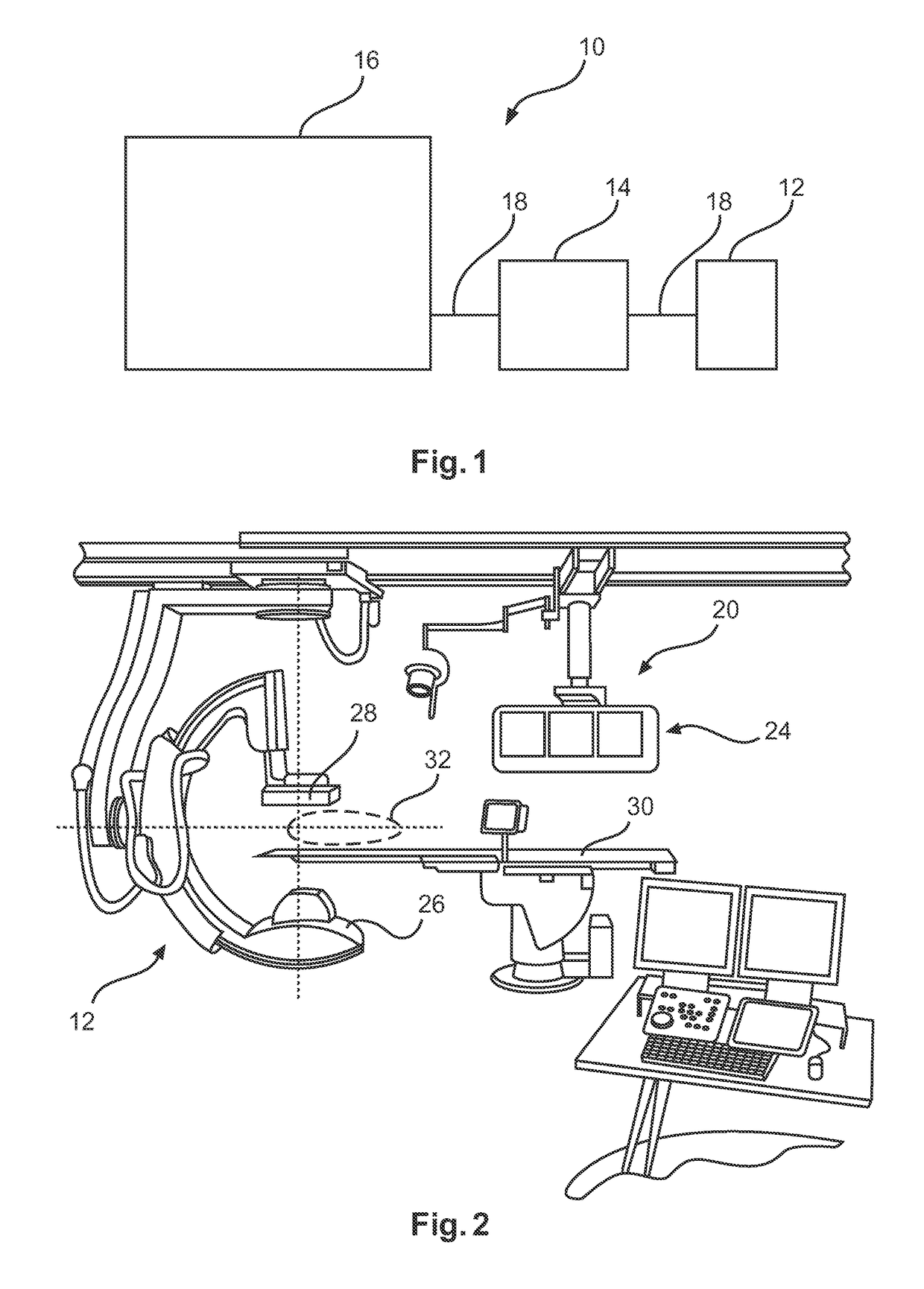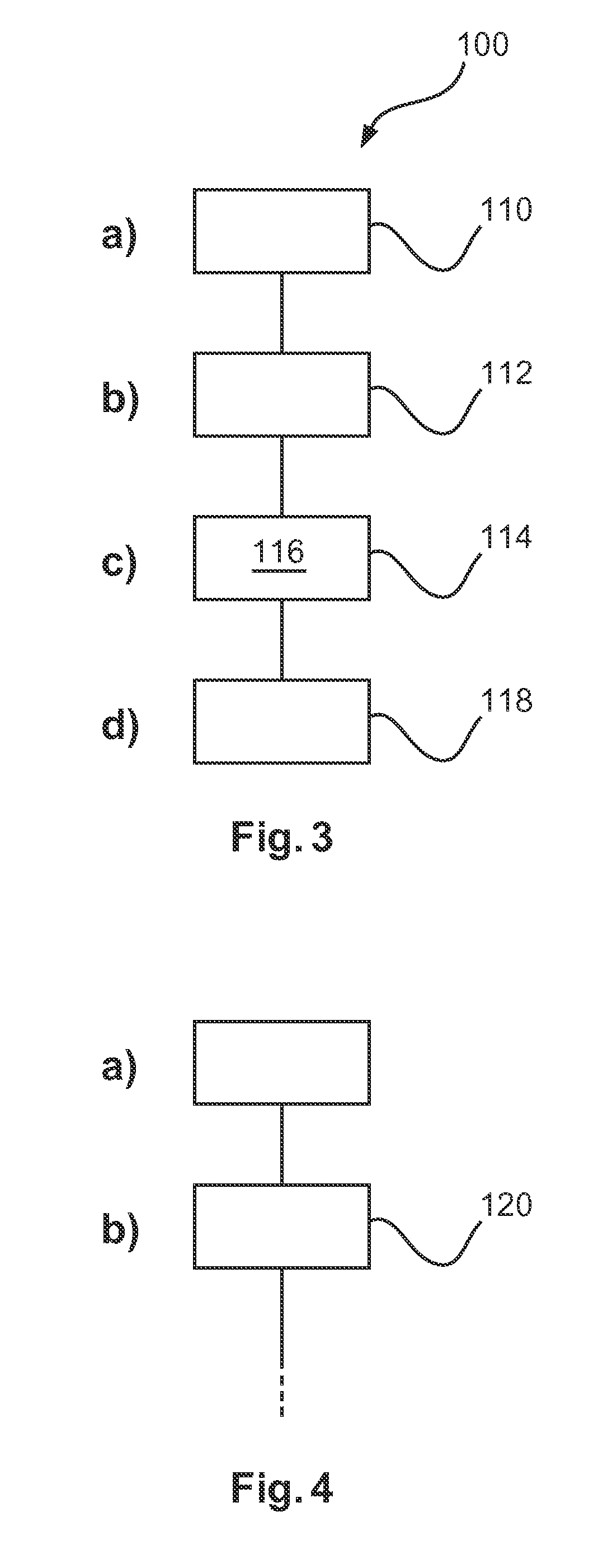Bone suppression in X-ray imaging
a bone suppression and x-ray imaging technology, applied in the field of medical x-ray imaging, can solve the problem that the suppression of bone structures is not readily applicable in cardiac angiography, and achieve the effect of facilitating perception and increasing details
- Summary
- Abstract
- Description
- Claims
- Application Information
AI Technical Summary
Benefits of technology
Problems solved by technology
Method used
Image
Examples
Embodiment Construction
[0047]FIG. 1 shows a medical image viewing device 10 for navigation in X-ray imaging, wherein the medical image viewing device 10 comprises an image data providing unit 12, a processing unit 14, and a display unit 16. The image data providing unit 12 is configured to provide an angiographic image of a region of interest of an object. The processing unit 14 is configured to identify a suppression area for partial bone suppression within the angiographic image, and to identify and locally suppress predetermined bone structures in the angiographic image in the suppression area, to generate a partly-bone-suppressed image. The display unit 16 is configured to display the partly-bone-suppressed image. Connecting lines 18 indicate data connection between the image data providing unit 12, the processing unit 14, and the display unit 16. The data connection can be provided by wire connection and by wireless connection.
[0048]The term “suppression area” relates to a selected portion of the ima...
PUM
 Login to View More
Login to View More Abstract
Description
Claims
Application Information
 Login to View More
Login to View More - R&D
- Intellectual Property
- Life Sciences
- Materials
- Tech Scout
- Unparalleled Data Quality
- Higher Quality Content
- 60% Fewer Hallucinations
Browse by: Latest US Patents, China's latest patents, Technical Efficacy Thesaurus, Application Domain, Technology Topic, Popular Technical Reports.
© 2025 PatSnap. All rights reserved.Legal|Privacy policy|Modern Slavery Act Transparency Statement|Sitemap|About US| Contact US: help@patsnap.com



